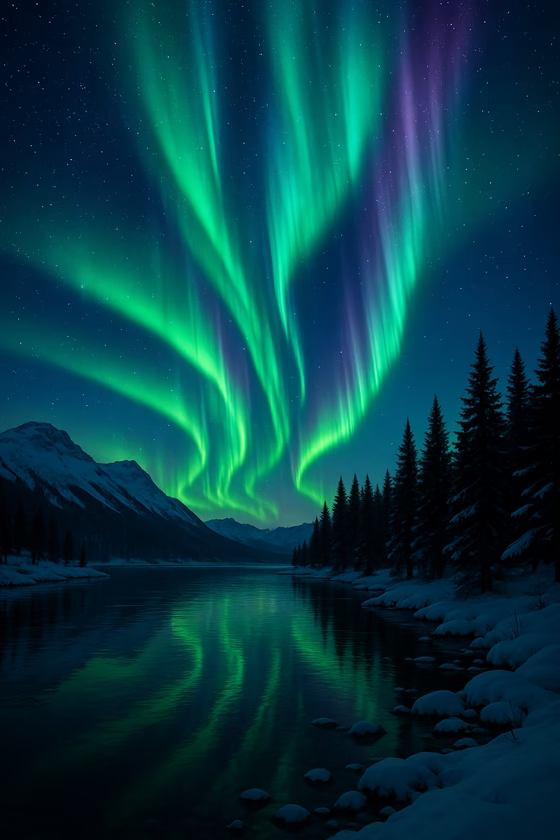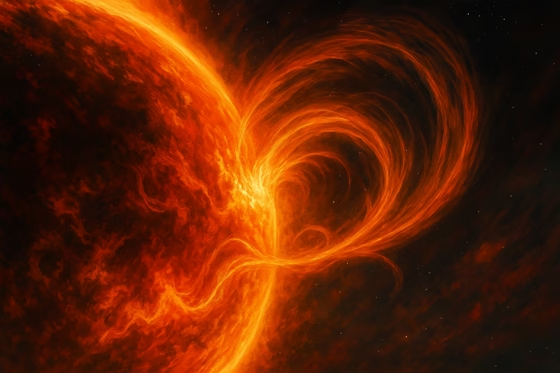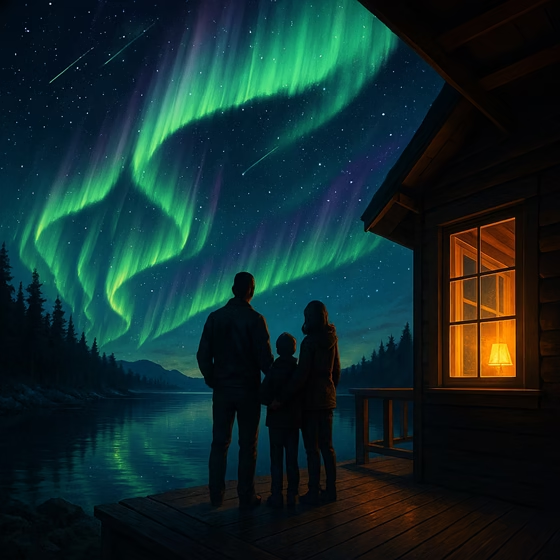August Solar Storm: Northern Lights and Space Weather Explained
On a clear summer evening, families across Canada gather outside with thermoses of hot cocoa, eyes fixed on the sky. Word has spread that an incoming solar storm may paint the heavens with shimmering curtains of green and purple. Far beyond their view, a burst of plasma has left the Sun and is racing toward Earth. If forecasts hold true, the northern lights could dance farther south than usual in August 2025.
The Trigger: A Coronal Mass Ejection
On August 5, a strong M4.4 solar flare erupted from the Sun, launching a coronal mass ejection (CME) into space. Space‑weather experts predict that the CME will reach Earth around August 8, creating G1–G2 geomagnetic storms with a chance of G3‑level activity [1]. The forecast also notes a 55 percent chance of additional M‑class flares and a 15 percent chance of X‑class events [2], thanks to nine active sunspot regions, including the magnetically complex AR4168 region.
When a CME collides with Earth’s magnetosphere, charged particles spiral along magnetic field lines toward the poles. As they collide with oxygen and nitrogen in the upper atmosphere, they produce the vivid colors of the aurora. The more powerful the storm, the farther the auroras can be seen from the poles.
How Solar Storms Work
Solar storms are eruptions of energy from the Sun’s surface. There are two main types:
- Solar flares – Intense bursts of electromagnetic radiation that can disrupt radio communications.
- Coronal mass ejections – Massive clouds of plasma and magnetic fields ejected into space. When directed at Earth, they can trigger geomagnetic storms.
The Sun follows an 11‑year activity cycle, progressing from solar minimum to solar maximum. During peak activity, sunspots and flares are more common. This current cycle is expected to reach maximum around 2025, which explains the uptick in solar events.

Where and When to See the Northern Lights
If conditions are right, the aurora may be visible at latitudes as far south as the Great Lakes. For the best chances:
- Head north – The closer you are to the magnetic poles, the stronger the display.
- Find dark skies – Light pollution can drown out faint auroras; choose rural locations away from city lights.
- Check forecasts – Space‑weather agencies like NOAA’s Space Weather Prediction Center provide updated KP index forecasts.
- Prepare your camera – Use long exposures on a tripod. Many smartphones now have night modes capable of capturing auroras.
Keep in mind that geomagnetic activity can fluctuate. Even if forecasts predict a storm, cloud cover and local conditions may limit visibility. Patience and warm clothing are essential.

Potential Impacts on Earth
Most geomagnetic storms are mild, but stronger events can affect technology. G1–G2 storms may cause:
- Minor voltage fluctuations in power grids.
- Geomagnetic induced currents in pipelines.
- Satellite orbit adjustments, leading to drag on low‑Earth‑orbit satellites.
- Shortwave radio disruptions, especially at high latitudes.
During more intense G3 storms, some airlines reroute polar flights, and GPS accuracy may degrade temporarily. Fortunately, these impacts are typically short‑lived. Power companies and satellite operators monitor forecasts and take precautionary measures.
Safety and Preparedness
For most of us, solar storms are harmless and provide a free light show. However, those who rely on radio communications or operate sensitive electronics should stay informed. Tips include:
- Subscribe to alerts – Agencies like NOAA SWPC or SpaceWeatherLive send notifications when geomagnetic activity is high.
- Back up critical data – Storms can induce power surges; surge protectors and backups minimize risk.
- Avoid touching metal fences during rare severe events; induced currents can cause shocks.

Conclusion: A Celestial Spectacle
Whether you’re an amateur astronomer or simply someone who loves a good story, August’s predicted solar storm offers a chance to connect with the cosmos. These events remind us that our planet is part of a dynamic space environment. If you plan to head out in search of auroras, bundle up and bring a sense of wonder. For insights on how environmental conditions closer to Earth affect our health, read our companion piece on wildfire smoke and your well‑being. For official space‑weather updates, visit the NOAA Space Weather Prediction Center.
Call to Action: Share your aurora photos or sky‑watching tips in the comments below, and subscribe to our newsletter for more science and space news.
[1] [2] Sun news: Sun-stuff on its way to Earth! Auroras incoming?
https://earthsky.org/sun/sun-news-activity-solar-flare-cme-aurora-updates/
